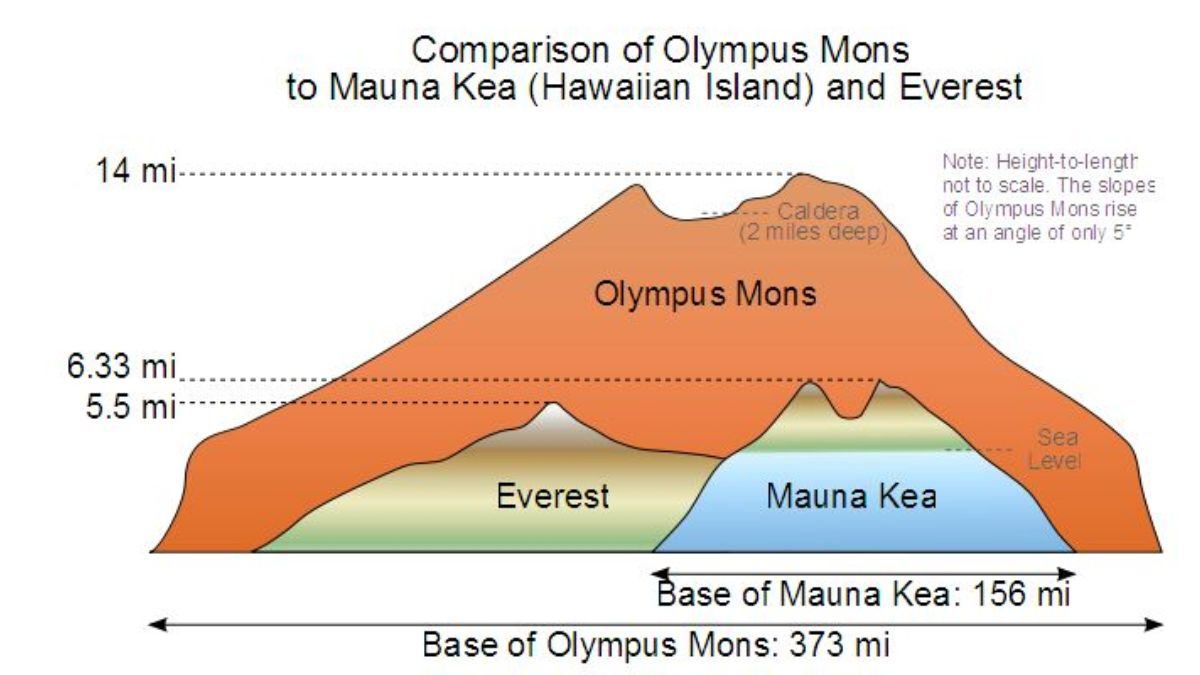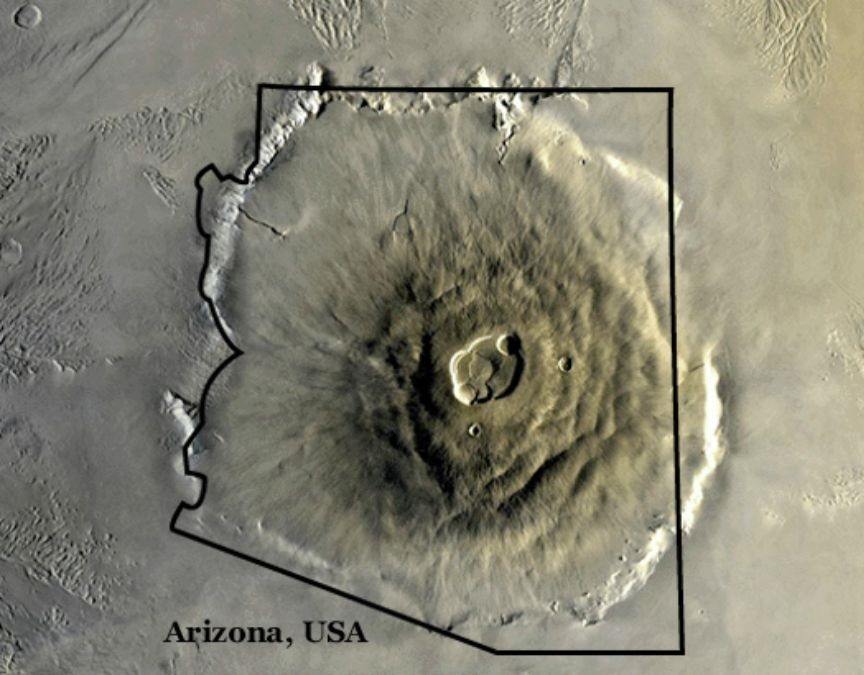Rising from the Martian plains, Olympus Mons stands as a testament to the power of volcanic forces. This behemoth isn't just the largest volcano on Mars; it's the largest volcano in the entire solar system, dwarfing even the mighty Mauna Loa on Earth. Its colossal form, stretching over 22 miles (35 kilometers) high and 370 miles (600 kilometers) wide, would easily blanket the entire state of Arizona.
But what makes Olympus Mons so special? Why does Mars play host to such a monstrous mountain, while Earth's volcanoes seem like mere foothills in comparison? The answer lies in the unique geological makeup of the Red Planet.
Let us learn more about the biggest volcano in our solar system.
Also read: China’s Spaceplane Mission: Know All Key Details and Its Significance Here
Olympus Mons: Biggest Volcano in Solar System

As per the official website of NASA’s Mars Exploration Program, Olympus Mons is a shield volcano 624 km (374 mi) in diameter (approximately the same size as the state of Arizona), 25 km (16 mi) high, and is rimmed by a 6 km (4 mi) high scarp.
A caldera 80 km (50 mi) wide is located at the summit of Olympus Mons. To compare, the largest volcano on Earth is Mauna Loa which is also a shield volcano 10 km (6.3 mi) high and 120 km (75 mi) across.
The volume of Olympus Mons is about 100 times larger than that of Mauna Loa. In fact, the entire chain of Hawaiian islands (from Kauai to Hawaii) would fit inside Olympus Mons! Compared with Mount Everest, Olympus Mons is nearly three times the height of Everest's 8.8 kilometers (5.5 miles). Imagine stacking two and a half Everests on top of each other, that's roughly the elevation of Olympus Mons!
Why is Olympus Mons the biggest volcano?
 Image: NASA
Image: NASA
Olympus Mons reigns supreme as the solar system's biggest volcano due to the following mechanisms:
Stationary tectonic plates: Unlike Earth's constantly shifting plates, Mars's plates are largely fixed. This allows a "hot spot" of molten rock under the crust to stay put, spewing lava in the same place for millions of years. Imagine a never-ending volcanic buffet, piling layer upon layer of lava on top of itself!
Thick and stable crust: Mars boasts a thicker and more stable crust than Earth. This sturdy foundation can handle the immense weight of Olympus Mons without buckling or collapsing, providing a solid platform for its growth. Think of it as a super-strong pancake base for your ever-growing stack of volcanic pancakes.
Long eruptions: With no tectonic plates moving the hot spot away, Olympus Mons enjoys extended periods of eruption. Each eruption adds another layer to the mountain, slowly but surely pushing it towards its colossal height. It's like a slow-motion volcanic movie, where the climax keeps building for millions of years.
Low gravity: Mars's gravity is just about 38% of Earth's. This means the lava flows further and spreads out wider on the Martian surface, contributing to the volcano's vast base.
Also read: India’s Space Station By 2035, Manned Mission On Moon By 2040: PM Modi To ISRO
Comments
All Comments (0)
Join the conversation